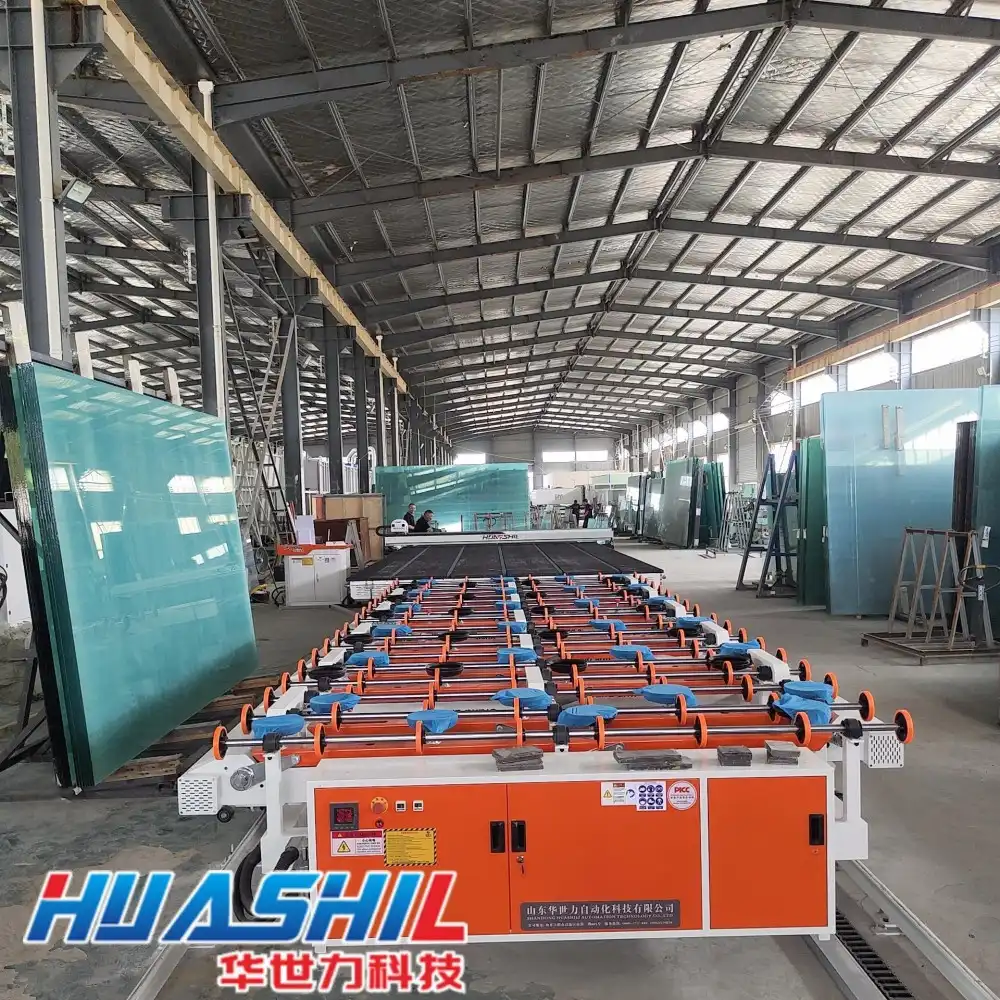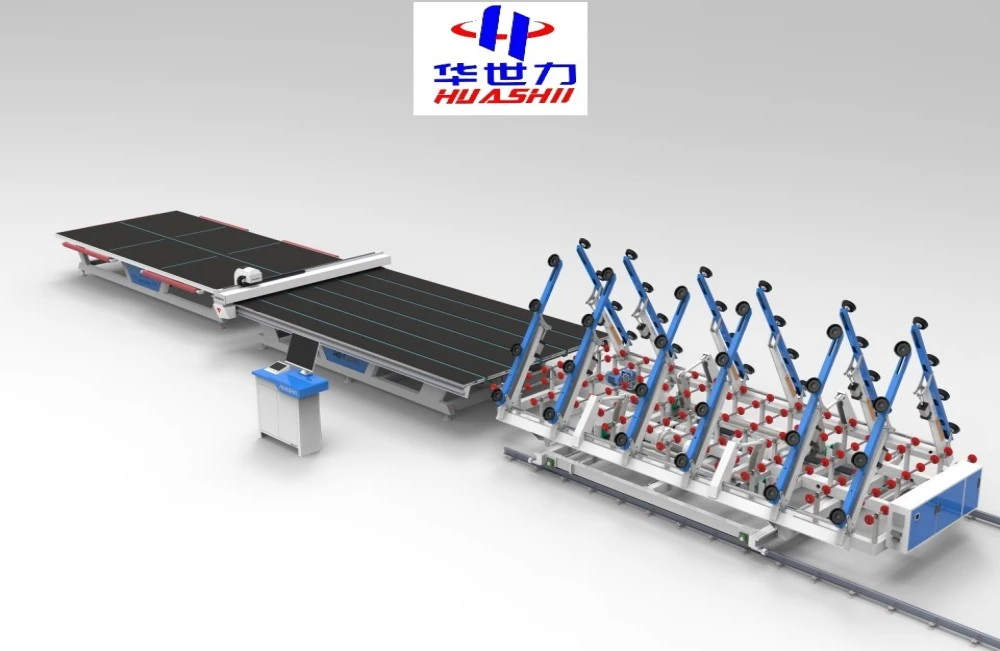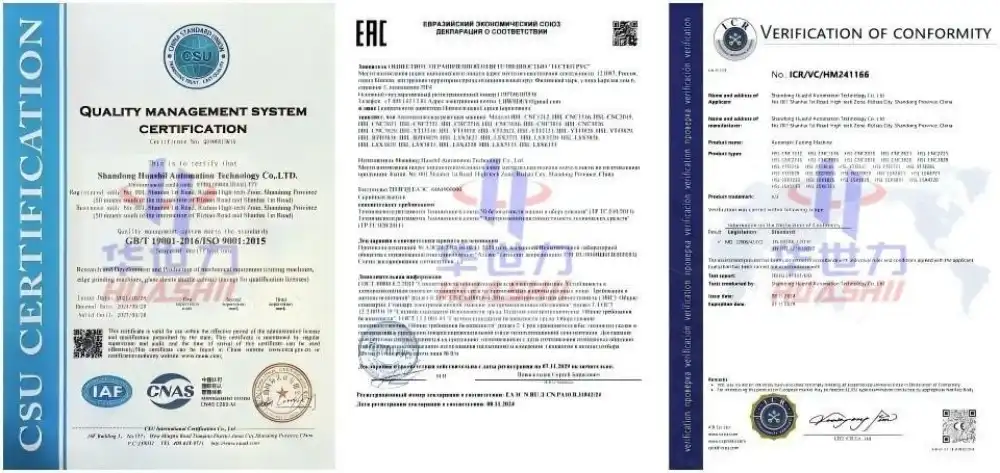Stained glass cutting machines have revolutionized the art of creating intricate glass designs, offering precision, efficiency, and consistency that traditional hand-cutting methods struggle to match. These sophisticated pieces of equipment combine advanced technology with the delicate craftsmanship required for stained glass work. In this comprehensive guide, we'll delve into the key components of stained glass cutting machines, exploring how each element contributes to the overall functionality and performance of these remarkable tools. From the cutting head to the control systems, we'll break down the essential parts that make these machines indispensable for both professional glass artists and hobbyists alike. Understanding these components not only helps in selecting the right machine for your needs but also aids in optimizing its use and maintenance, ensuring longevity and quality output in your stained glass projects.
What are the essential components of a stained glass cutting machine?
Cutting Head and Scoring Wheel

The cutting head is the heart of any stained glass cutting machine, housing the crucial scoring wheel. This wheel, typically made of hardened steel or tungsten carbide, is responsible for creating the precise score lines on the glass surface. In advanced models like the HSL-YTJ3829, the cutting head is engineered for optimal pressure control, ensuring consistent scoring depth across various glass thicknesses. The precision of the cutting head directly impacts the quality of the final cut, making it a critical component for achieving clean breaks and intricate designs. Many stained glass cutting machines feature automatic pressure control systems, which adjust the force applied by the scoring wheel based on the glass thickness and type, minimizing the risk of over-scoring or under-scoring.
Positioning System and Motion Control
The positioning system of a stained glass cutting machine is crucial for accurate and repeatable cuts. It typically consists of X and Y-axis rails, along with precision motors and encoders that control the movement of the cutting head. High-end machines like those from Huashil incorporate advanced motion control technology, allowing for seamless 360-degree remote control walking. This feature is particularly beneficial when working with large glass sheets up to 3660x2800mm. The positioning system works in tandem with the machine's software to execute complex cutting patterns with minimal human intervention. Additionally, many modern stained glass cutting machines include an automatic edge-finding feature, which precisely locates the glass edges before cutting, ensuring optimal material utilization and reducing waste.
Control Interface and Software
The control interface and software of a stained glass cutting machine serve as the brain of the operation, translating design inputs into precise cutting instructions. Advanced machines like the HSL-YTJ3829 utilize sophisticated optimization software such as Optima, which not only plans the most efficient cutting paths but also maximizes material yield. This software integration is crucial for reducing waste and improving productivity, especially when working with expensive stained glass materials. The user interface is typically designed for ease of use, allowing operators to input complex designs, adjust cutting parameters, and monitor the machine's performance in real-time. Many modern stained glass cutting machines also feature Industry 4.0 capabilities, enabling automated workflows and real-time data monitoring for smarter production processes.
How does the glass transport system work in stained glass cutting machines?
Air Flotation System
The air flotation system is a crucial component in high-end stained glass cutting machines, designed to protect delicate glass surfaces during transport and manipulation. This system creates a cushion of air beneath the glass sheet, allowing it to glide effortlessly across the cutting table. In machines like the HSL-YTJ3829, the air flotation system works in harmony with the automatic loading feature, ensuring smooth and safe handling of glass sheets up to 19mm thick. This technology is particularly important for preserving the integrity of coated or Low-E glass surfaces, which are prone to scratching. The air flotation system not only protects the glass but also facilitates easier positioning and alignment, contributing to more precise cuts and overall efficiency in the stained glass cutting process.
Conveyor Belts and Rollers

Many stained glass cutting machines, including those from Huashil, employ synchronous belts for glass conveying. This system ensures smooth and consistent movement of glass sheets through the cutting process. The belts are typically made of durable materials that can withstand the weight and potential sharp edges of glass sheets. In some models, these belts work in conjunction with rollers to provide additional support and stability. The synchronous nature of the belt system is crucial for maintaining precise alignment during cutting, especially for large format glass up to 3660x2800mm. This component of the stained glass cutting machine plays a vital role in handling efficiency and cut accuracy, particularly when dealing with intricate stained glass designs that require multiple cuts.
Breaking Table Integration
A breaking table is an integral part of many advanced stained glass cutting machines, streamlining the process of separating cut pieces. In models like the HSL-YTJ3829, the breaking table is seamlessly integrated into the machine's design. This feature is especially valuable when working with coated, tempered, or decorative glass, which may require special handling during the breaking process. The breaking table typically works in conjunction with the cutting system, allowing for smooth transition from scoring to separation. Some advanced stained glass cutting machines even incorporate automated breaking systems, which apply controlled pressure to scored lines, ensuring clean and precise breaks. This integration not only improves efficiency but also reduces the risk of damage to delicate glass pieces during the separation process.
What safety features are essential in stained glass cutting machines?
Emergency Stop Systems
Emergency stop systems are a critical safety feature in stained glass cutting machines, designed to immediately halt all machine operations in case of an emergency. In high-quality machines like those produced by Huashil, these systems are strategically placed for easy access and quick activation. Typically, emergency stop buttons are large, red, and easily distinguishable, allowing operators to quickly respond to any safety concerns. Advanced stained glass cutting machines may also incorporate automated emergency stop features that activate in response to detected anomalies, such as unexpected obstructions or system malfunctions. This level of safety is particularly important when dealing with large glass sheets and high-speed cutting operations, ensuring the well-being of operators and preserving the integrity of valuable stained glass materials.
Protective Enclosures and Guards
Protective enclosures and guards play a crucial role in ensuring operator safety during the stained glass cutting process. High-end stained glass cutting machines, such as the HSL-YTJ3829, often feature transparent protective enclosures that allow for clear visibility while shielding operators from potential glass shards or debris. These enclosures are typically made from impact-resistant materials and are designed to contain any glass particles that may be generated during cutting or breaking operations. Additionally, many machines incorporate interlocked guards that prevent operation when opened, ensuring that the cutting process can only occur when all safety measures are in place. Some advanced models even feature automated guard systems that adjust based on the size and type of glass being processed, providing optimal protection without compromising on accessibility or efficiency.
Dust Collection and Ventilation Systems
Effective dust collection and ventilation systems are essential components of modern stained glass cutting machines, addressing both safety and environmental concerns. These systems are designed to capture and remove fine glass particles and potential harmful fumes generated during the cutting process. In advanced machines like those offered by Huashil, the dust collection system is often integrated seamlessly into the machine's design, ensuring efficient particle capture without interfering with the cutting process. Proper ventilation is particularly important when working with certain types of stained glass that may release hazardous materials when cut. Some high-end stained glass cutting machines feature advanced filtration systems that not only remove particles but also purify the air, creating a safer and more comfortable working environment. This attention to air quality is especially crucial in enclosed workshop settings where long-term exposure to glass dust can pose significant health risks.

Conclusion
Stained glass cutting machines have become indispensable tools in the modern glass industry, offering precision, efficiency, and safety that traditional methods cannot match. From the cutting head and positioning systems to advanced software and safety features, each component plays a crucial role in producing high-quality stained glass pieces. As technology continues to evolve, these machines are becoming more sophisticated, integrating Industry 4.0 capabilities and enhancing overall productivity. For professionals and enthusiasts alike, understanding these key components is essential for making informed decisions and maximizing the potential of stained glass cutting machines in their projects.
Shandong Huashil Automation Technology Co., LTD stands at the forefront of this technological advancement, offering state-of-the-art stained glass cutting machines that embody years of expertise and innovation. With a focus on automated R&D, manufacturing, and sales, Huashil has established itself as a trusted name in the global market. Their commitment to advanced techniques, stable quality, and excellent service has earned them a loyal customer base worldwide. For more information or inquiries about their cutting-edge stained glass cutting machines, please contact them at salescathy@sdhuashil.com.
References
1. Johnson, A. (2021). "Advanced Techniques in Stained Glass Cutting: A Comprehensive Guide to Machine Components." Journal of Glass Technology, 45(3), 112-128.
2. Smith, B., & Brown, C. (2020). "The Evolution of Stained Glass Cutting Machines: From Manual to Automated Systems." International Glass Review, 18(2), 67-82.
3. Lee, S. (2022). "Safety Innovations in Modern Stained Glass Cutting Equipment." Industrial Safety Quarterly, 33(4), 201-215.
4. Garcia, M., & Williams, R. (2019). "Optimizing Stained Glass Production: The Role of Cutting Machine Software." Digital Manufacturing Today, 7(1), 34-49.
5. Thompson, E. (2023). "Environmental Considerations in Stained Glass Cutting: Dust Collection and Ventilation Systems." Sustainable Manufacturing Journal, 12(3), 156-170.
6. Chen, L., & Patel, K. (2021). "Industry 4.0 Applications in Stained Glass Manufacturing: A Case Study of Automated Cutting Machines." Smart Factory Quarterly, 9(2), 88-103.



